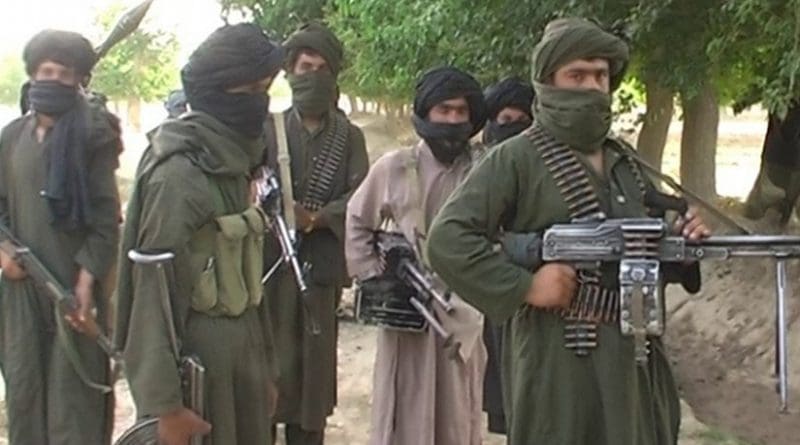Afghan Peace Process: Headed Down A Blind Alley? – Analysis
The second meeting of the Quadrilateral Coordination Group (QCG) of Afghanistan, Pakistan, the US and China on the Afghan peace and reconciliation process was held in Kabul, Afghanistan, on January 18, 2016, a week after the first round of discussions concluded in Islamabad, Pakistan. The second meeting of the QCG had called on all Taliban groups to “accept the government’s call for peace through dialogue” and end the senseless violence against the Afghan people.
The QCG meetings do not include Taliban representatives, and are part of a three-step process:
a. Formulating a roadmap
b. Inviting the armed opposition to the negotiating table
c. Implementing the peace plan
The roadmap would include identification of the Taliban factions for negotiations, a timetable and incentives to be offered. It is expected that two more rounds of these “preparatory meetings” will take place. The third QCG meeting will be held on 06 February 2016, in Islamabad.
Though the unstated objective of the QCG meetings is to build trust between Afghanistan and Pakistan, little progress has been made on this front, and consequently, there appears to be no clarity on how to shape the peace process. Also lacking is the consensus on incentives that can persuade the Taliban to give up violence and pursue a political approach. Furthermore, it is still unclear as to which Taliban groups are willing to join the peace process. The dissident Taliban faction under Mullah Akhund has already rejected the offer for peace talks, conditioning it with the withdrawal of the US troops from Afghanistan. The situation is also complicated by the fact that some Taliban have joined Islamic State–Khorasan (IS-K), the Islamic State’s franchise in Afghanistan.
Differences between Afghanistan and Pakistan
Regarding peace talks, there exist differences between Kabul and Islamabad on matters relating to the roadmap. The Afghan government believes that the onus is on Pakistan to see the deal with the Taliban while Pakistan feels it can only facilitate to the extent that it can convince but not compel the Taliban for negotiations. It is for the Afghan government to find common ground with the Taliban and clinch the deal through appropriate political concessions.
Differences also exist between the two countries on to methods to deal with irreconcilable Taliban factions. Furthermore, quite understandably, the Afghan government, given the territorial gains made by the Taliban in the recent fighting, wants a timeline approach. Conversely, Pakistan wants open-ended peace talks without pre-conditions. Afghans are reportedly looking at a two-month period for breakthrough in talks.
Other Tangibles
While a conditional ceasefire agreement in the next few weeks is extremely crucial to the continuation of the peace process given the Taliban fight-talk approach, the growing activities of the IS in Afghanistan too increase the importance of the current peace initiative and a time-bound progress.
The resurgence of al Qaeda, and its strengthening relationship with the Taliban, is another issue of urgent concern. First, al Qaeda chief Ayman al Zawahiri pledged allegiance to the new Taliban Chief Mullah Mansour, who accepted it. The latter also appointed al Qaeda affiliated Sirajuddin Haqqani as one of his two deputies.
Second, and more significantly, as per the US’ reports, in 2015, the Taliban permitted al Qaeda to run at least three training camps inside Afghanistan.
Pakistan adds to the density of the issue by claiming that terror strikes inside its territory are being orchestrated by militants based in Afghanistan, a part of the pattern of cross-border terrorism that is undermining peace efforts in the region.
Key Developments
There have been some key developments between the second and the third QCG meetings. The Taliban continues to increase its territorial gains both in the north and south of Afghanistan, with 40 Afghan districts under their direct control, and another 39 at the risk of meeting the same fate.
On 24 January 2016, the Taliban, met with Afghan lawmakers and civil society members at an informal two-day organised by Pugwash in Doha. They reiterated their preconditions for the resumption of peace talks with Kabul. These included removing from international terror blacklists their leaders, all bounties on their heads, and the release of an unspecified number of prisoners. The Taliban’s spokesperson called the talks “positive.” Afghan government officials did not attend the meeting.
The other “preliminary steps needed for peace” demanded by the Taliban includes the reopening of its political office in Doha and its recognition as the only entity authorised to carry out negotiations on its behalf. The Taliban said it is serious about peace and establishing an “independent Islamic system,” committed to “civil activities,” free speech, and “women’s rights in the light of Islamic rules, national interests and values.” The Taliban also claimed that it does not allow its territory to be used to “harm others,” and it is not open to power-sharing with the government in Kabul.
Significantly, while there appears to be an increased Chinese interest in the ongoing reconciliation process, the US is signalling that it is recalibrating its mission in Afghanistan to prolong its military presence.
Given the entrenched position on all sides, the third QCG in Islamabad appears headed down a blind alley.
This article was published at IPCS


Perhaps but a blind diplomatic alley is preferable to a state of constant conflict and danger. Over a decade of involvement and billions in support has clearly shown that neither the US nor the Northern Alliance/Unity Government have the will nor the capacity to put the Taliban out of commission. Consequently, its the poor Afghan on the street and the soldier who bears the brunt. The question is who can outlast the other in this deadly confrontation.